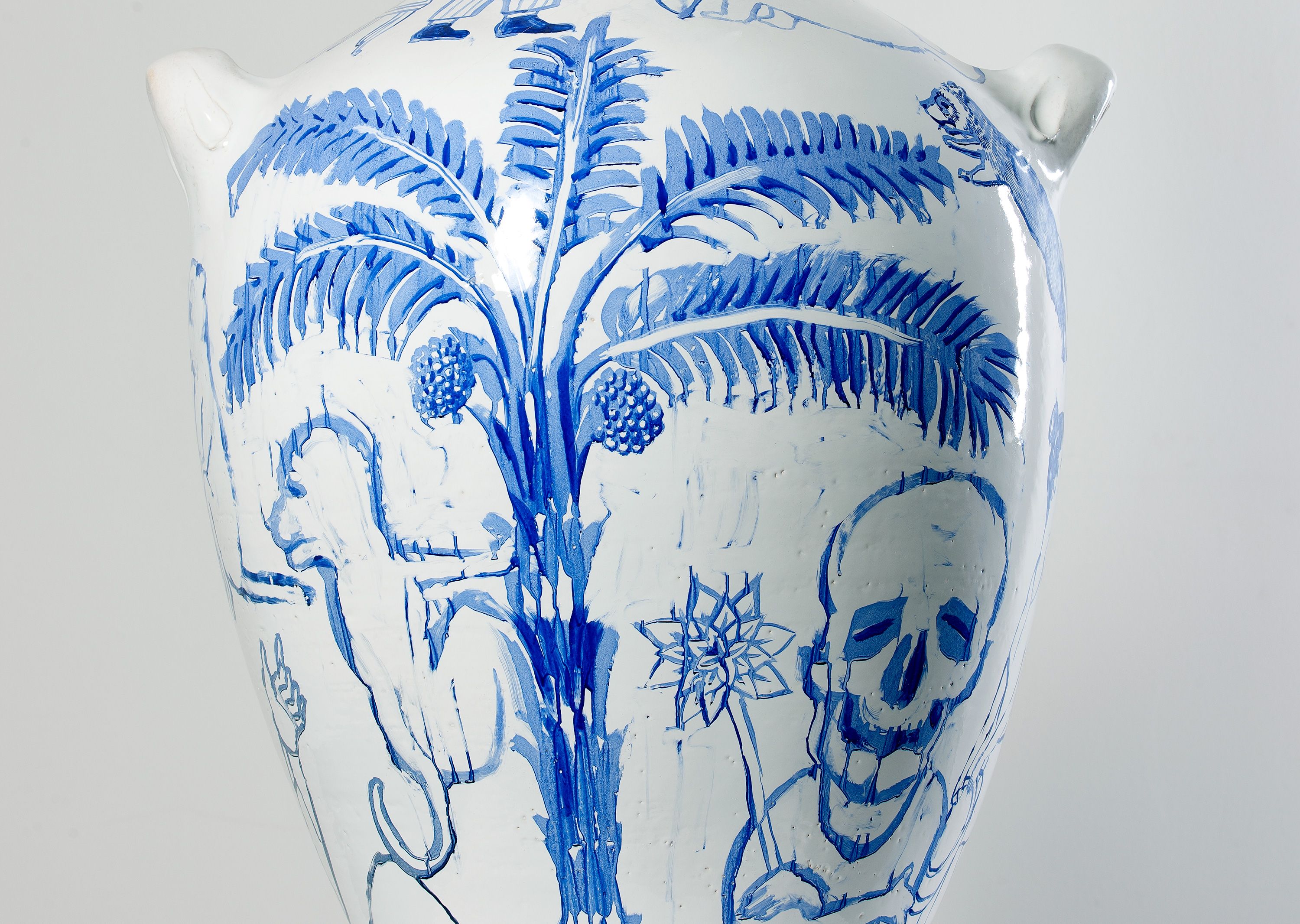Gábor Roskó
Belgian Congo
| Venue: | acb Attachment |
| Date: | Nov 22 – Dec 20, 2013 |
Description
Gábor Roskó’s artworks are presented in the form of a solo exhibition at the acb Gallery for the
first time. Roskó, having started out as a painter in the 1980s, by the end of the decade, also
extended his artistic scope to the media of ceramics and graphics. His figurative works, in all
three genres, build on the (physical or intellectual) reality of his own age. Filtered, as they are,
through a subjective, allegorical-ironic mode of expression peppered with references drawn
from varied historical traditions, these pieces stand before the viewer as enigmatic, timeless
works of art. In addition to the Jewish tradition, his historical references include the visual and
literary (primarily mythical and fabulistic) heritage of a number of ancient cultures: aside fro
the cultures of the Mediterranean Sea, the legacies of the Middle and Far East also provide key
sources for Roskó’s work. In his paintings and graphics, he often places animals and human
beings (real people or mythical and literary characters), as well as their hybrids (e.g. animal-
headed humans) in a surreal scene. In other instances, he arranges human, animal, plant or
object motifs into emblem-like, closed compositions, as is also characteristic of the visual world
of his ceramics. Text is an important element of his works, sometimes appearing in the form of
captions, at other times relating to the visual content as the title of the artwork, thereby providing
a point of reference and further possible layers of interpretation (even if by the relativization or
alienation of the visual content). While relativizing the present through various means, Gábor
Roskó’s works engage such issues as anti-Semitism and Colonialism in their varied forms, as
well as national (identity) politics. The works, which transport these topics (often stances) into a
visual world permeated by symbols, allegories and irony, prompt their viewers to think and form
associations, while also testing their views on fiction, reality, private history, and ideology.
The exhibition entitled Belgian Congo centers around a single work – a large, painted
ceramic vase. The object – whose shape invokes archaic Greek vases and whose high-
temperature glaze with cobalt blue motifs, painted against a white background, calls to mind the
Chinese traditions of vase painting – features human, animal, and plant figures, already familiar
from the artist’s graphics. Rather than forming a network-like pattern, these painted figures are
arranged into scenes or shown by themselves, dynamically covering the surface of the vase.
This is the first piece in the oeuvre of Gábor Roskó – an artist who has been
experimenting, in terms of both form and technique, with the boundaries of the genre of painted
ceramics – in which the theme unfolds from the painted motifs of the glaze. His previous
ceramic works functioned more like sculptures – either as singular forms or ensembles. While in
the case of the vase, the genre, as plastic carrier, provides an important function in terms of
meaning, the emphasis is nevertheless placed on the painted element. The shape and glazing
of the vase are brought into play as archaic references in connection with the painted motifs, as
a result of the emergence of the narrative and associative content of the latter into the
foreground. With regard to the genre, in addition to allusions to traditions from the history of art,
we should also mention renowned British visual artist Grayson Perry as an important reference,
who acquired international recognition with his painted ceramic vases which bear social critical
themes and which also stretch the technical limits of the genre.
The title Belgian Congo gains its significance in connection with another work on display:
a photo, of which, as per the intention of the artist, visitors can only obtain information upon
viewing the exhibition.

